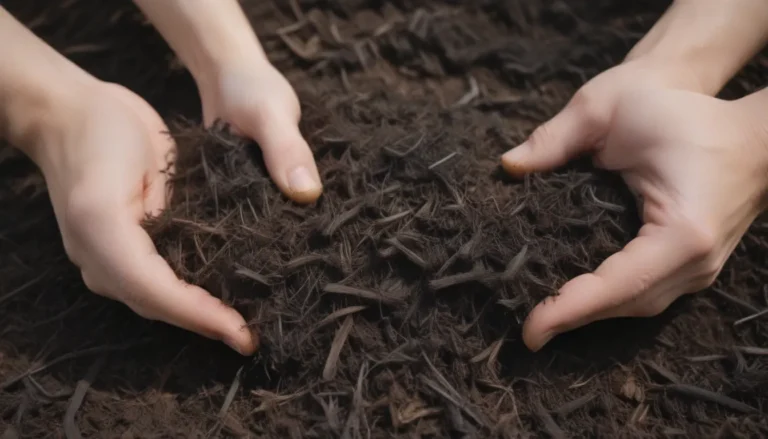Maximizing the Beauty of Mock Orange Shrubs: A Comprehensive Guide for Gardeners

Are you looking to add a touch of elegance and sweet fragrance to your garden? Look no further than the delightful mock orange shrub. With its stunning flowers and easy maintenance, growing mock orange varieties can be a rewarding experience for any gardener. In this guide, we will delve into the world of mock orange shrubs, exploring different varieties, care tips, pruning techniques, propagation methods, and common problems to watch out for. By the end of this article, you will be equipped with all the knowledge you need to grow and enjoy these beautiful shrubs in your outdoor space.
A Closer Look at Mock Orange Varieties
‘Aurea’: This variety stands out for its golden foliage, adding a unique twist to the traditional dark green leaves of mock orange shrubs.
‘Blizzard’: With an abundance of white, fragrant flowers, ‘Blizzard’ is sure to create a snowstorm of beauty in your garden.
‘Miniature Snowflake’: Perfect for smaller spaces, this compact variety still packs a punch with its delicate blooms and fresh scent.
‘Snowbelle’: If you’re looking for a classic mock orange shrub with timeless appeal, ‘Snowbelle’ is the perfect choice.
‘Variegatus’: This variety offers a striking contrast with its variegated leaves, adding visual interest to any garden.
Tip
When choosing a mock orange shrub, be sure to select a variety with fragrant flowers. Visit a nursery when the shrub is in bloom so you can experience the fragrance firsthand. The flowers are most aromatic in the evening, making it a delightful addition to your garden for late-night strolls.
Nurturing Your Mock Orange: Care Tips and Guidelines
Mock orange shrubs are relatively low-maintenance, making them a popular choice for gardeners looking to add beauty without the hassle. Here are some essential care tips to ensure your mock orange thrives:
Light
- Mock orange shrubs prefer full sun to partial shade, receiving at least four hours of direct sunlight daily.
- Planting them in full sun will encourage more profuse blooming.
Soil
- Ensure your mock orange shrub is planted in organically rich soil with good drainage.
- These shrubs can adapt to various soil types, including sandy, clay, and loamy soils.
- Aim for a slightly acidic to neutral soil pH for optimal growth.
Water
- Keep the soil moist but not waterlogged to prevent root rot.
- Mature mock orange shrubs have some drought tolerance but will still benefit from regular watering during dry spells.
Temperature and Humidity
- Mock orange shrubs are cold-hardy within their growing zones and generally do not need winter protection.
- Provide extra water and shade during extreme heat to help the shrub thrive.
- These plants can typically adapt well to different humidity levels.
Fertilizer
- Mix compost, bark humus, or manure into the soil when planting your mock orange shrub.
- For annual feedings, add a layer of compost around the shrub in late spring, avoiding nitrogen-rich fertilizers that can hinder flower growth.
Pruning for Optimal Growth and Blooming
Pruning is essential for maintaining the health and beauty of mock orange shrubs. By following these pruning guidelines, you can ensure your shrub stays vibrant and produces abundant flowers:
- Mock orange shrubs bloom on the previous year’s growth, so prune immediately after flowering to avoid cutting off next year’s buds.
- Remove dead, damaged, or poorly shaped branches to encourage healthy growth.
- Stimulate new growth and more flowers by pruning out a third of the oldest branches on mature shrubs.
- Consider rejuvenation pruning for overgrown shrubs by cutting all branches to the ground in the spring for fresh growth.
Propagating Mock Orange: A Cost-Effective Method for Growing New Shrubs
Instead of buying nursery plants, you can propagate mock orange shrubs through cuttings, a budget-friendly way to expand your garden. Follow these steps for successful propagation:
- Take cuttings in the summer when the shrub is actively growing.
- Prepare the cuttings by removing leaves from the lower portion and dipping them in rooting hormone.
- Plant the cuttings in a well-draining potting mix and keep them moist until roots develop.
Celebrating the Beauty of Mock Orange Flowers
Mock orange flowers are the crowning glory of these shrubs, enchanting gardeners with their sweet scent and delicate petals. To ensure your mock orange blooms profusely year after year, consider the following tips:
- Mock orange flowers typically bloom in May and June, boasting clusters of white, four-petal blossoms.
- Adequate sunlight is crucial for abundant flowering, with full sun being ideal for optimal blooms.
- Pruning out older branches on mature shrubs can stimulate new growth and more flowers.
- Regular deadheading is unnecessary, as mock orange flowers will naturally rebloom in favorable conditions.
Addressing Common Problems with Mock Orange Shrubs
While mock orange shrubs are relatively trouble-free, certain issues can arise if not properly cared for. Here are some common problems to watch out for:
Poor Flowering
- Improper pruning may lead to reduced blooming, as cutting off next year’s buds inadvertently.
- Monitor environmental conditions and avoid excessive nitrogen fertilizer, which can inhibit flower production.
Leaves Turning Yellow
- Yellowing foliage is often a sign of overwatering, indicating poor soil drainage.
- Ensure your mock orange shrub receives adequate sunlight for healthy growth and flowering.
In conclusion, growing mock orange shrubs can be a rewarding experience for gardeners of all levels. With their fragrant flowers, easy maintenance, and versatility in different landscape settings, mock oranges are a valuable addition to any garden. By following these care tips, pruning guidelines, and propagation methods, you can enjoy the beauty and fragrance of mock orange shrubs in your outdoor space for years to come. Happy gardening!





